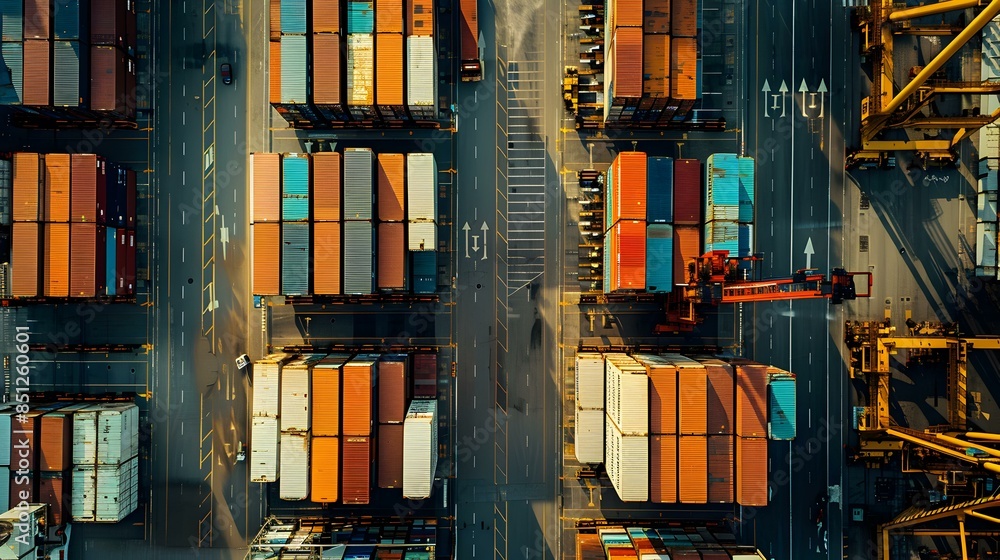On October 29, 2025
Capitalising on India’s Growth: Integrated Freight Forwarding to Master the Global Stage
FM Logistic India shows how integrated freight forwarding turns cost, complexity, and compliance into strengths that drive export growth.

On October 29, 2025
FM Logistic India shows how integrated freight forwarding turns cost, complexity, and compliance into strengths that drive export growth.
India isn’t just growing; it’s undergoing a fundamental transformation into a global manufacturing and export powerhouse. Driven by national initiatives, merchandise exports reached a robust $437.42 billion in FY 2024-25. While impressive, this figure illustrates the distance India must cover compared to rivals; for example, China’s merchandise exports were valued at approximately $3.58 trillion in 2024, and Vietnam’s were around $429 billion (Source: CIA World Factbook / WTO Estimates, 2024).
The nation’s commitment to trade efficiency however is clear: India has soared to the 38th position in the World Bank’s Logistics Performance Index (LPI), a significant jump from 44th in 2018 and 54th in 2014 (Source: World Bank LPI). This momentum is proof that investment in modern logistics pays off.
Scaling this ambition requires moving beyond simple transport to embracing Integrated Freight Forwarding, the strategic key to mastering the global stage and leveraging India’s three primary logistics hurdles: Cost, Complexity, and Compliance.
The perceived “Trilemma”, the combination of high costs, complexity, and compliance is, in fact, an opportunity for sophisticated operators to create strategic value. While India’s logistics costs are steadily improving, standing at an estimated 7.97% of GDP (Source: DPIIT-NCAER report, FY 2023-24), this figure still represents a substantial economic burden compared to the global best-in-class, where logistics costs hover around 6% to 7% of GDP. This delta highlights both the distance yet to travel and the immense competitive advantage available to operators who can aggressively manage and optimise this spend.
Optimising Cost for Global Pricing: Infrastructure gaps remain a significant drag on efficiency, highlighted by the high cost of road transport at approximately $₹11.03$ per tonne-km compared to rail’s much lower $₹1.96$ per tonne-km (Source: NCAER study). The reality is that road is, and will remain, the primary last-mile option. The opportunity, therefore, lies not in completely avoiding road but in optimising the modal mix. Integrated freight forwarding designs systems that intelligently shift traffic to cost-effective modes like rail and coastal shipping for long-hauls, effectively reducing the overall logistics spend and allowing Indian exporters to secure better profit margins and competitive international pricing.
Mastering Multimodal Complexity: The complexity of stitching together road, rail, air, and sea is a genuine operational challenge due to fragmented infrastructure, inconsistent last-mile connectivity, and varying state regulations. However, for expert operators, this complexity is also a source of differentiation. By skillfully managing the hand-offs and integrating services with rapidly developing public infrastructure like Dedicated Freight Corridors (DFCs), operators turn a multi-modal necessity into seamless service delivery. This integrated approach is the key to ensuring speed and reliability, extending connectivity and market access far beyond major metropolitan hubs and ports.
Ensuring Predictable Compliance: Navigating the mandatory documentation, varying customs processes, and state-specific rules is not merely an administrative task; it is a critical friction point that can lead to costly delays and penalties. When managed by integrated, technology-driven experts, compliance becomes a source of risk mitigation and delivery predictability. By standardising documentation, utilising digital platforms for e-clearance, and maintaining a granular, state-level understanding of regulations, sophisticated operators can ensure goods move with minimal friction, transforming a hurdle into a reliable element of the supply chain value proposition.
FM Logistic firmly believes that resolving the Trilemma requires an integrated, technologically driven approach. Ajit Jangle, Managing Director of FM Logistic India, observes, “Supply chains can no longer be seen as back-end operations. With real-time visibility, predictive tools, and integrated digital platforms, they are evolving into strategic growth enablers.” This strategic vision is built on four core pillars:
Prahlad Kumar Sharma, Associate Director Transport and Global Supply Chain at FM Logistic India notes, “the speed of modern trade demands that we not only master international regulatory frameworks but also have a granular, state-level understanding of complexity. True strategic value in Indian freight is delivered by integrating robust safety and compliance protocols directly into the multimodal routing, ensuring that every non-standard or high-value shipment is executed with zero-defect predictability.”
India’s journey from a regional player to a global manufacturing leader is undeniable, and its logistics infrastructure is catching up fast. The key to unlocking the nation’s full export potential lies in sophisticated, integrated freight forwarding that doesn’t just manage but actively converts the traditional hurdles of Cost, Complexity, and Compliance into a definitive competitive advantage. By embracing a digital-first, multimodal strategy, operators can guarantee the speed, security, and predictability required by the global stage, making India’s supply chain a strategic engine for sustained economic growth and positioning the country as an indispensable pillar of international trade.
How can we help you ?
What are you looking for?
Fill in the form